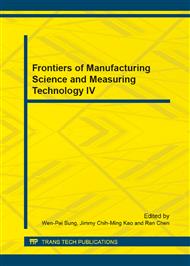p.1317
p.1321
p.1328
p.1333
p.1340
p.1346
p.1350
p.1357
p.1360
A New Auto-Extraction Algorithm of Multi-Size Lunar Craters Based on the Chang’E Data
Abstract:
A new algorithm of automatic extraction of multi-size lunar craters has been proposed. The proposed algorithm could detect multi-size craters by using different filters in multi-steps, which is a loop to detect multi-size craters by different size filters. In the first step, the new algorithm will use a larger filter to reduce noise and detect larger craters by using circle fitting at de-noised image. After marked these areas in the original image, it will remove those detected crater areas from the original image and do the noise reduction with a smaller filter again. The new algorithm will repeat the second step several times to finish the detection of whole image. Finally the new algorithm will merge results of these steps and output a final result. The new algorithm has been tested based on the Chang’E Data in the Matlab environment. The result has shown that this new algorithm does have the ability to detect different sized craters on the lunar surface, which has pointed a way to detect secondary craters automatically.
Info:
Periodical:
Pages:
1340-1345
Citation:
Online since:
August 2014
Authors:
Price:
Сopyright:
© 2014 Trans Tech Publications Ltd. All Rights Reserved
Share:
Citation:


